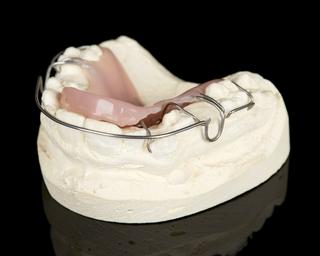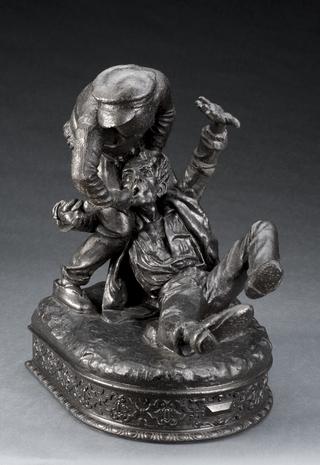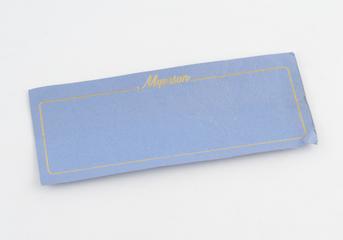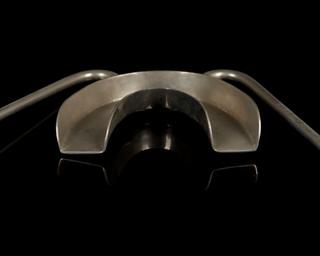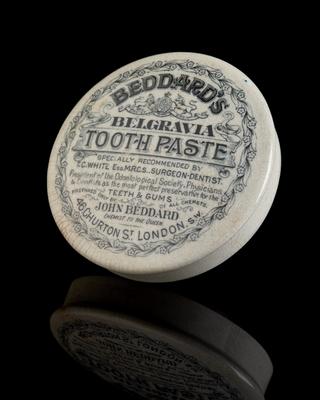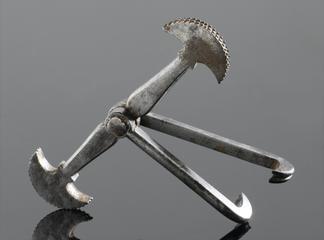
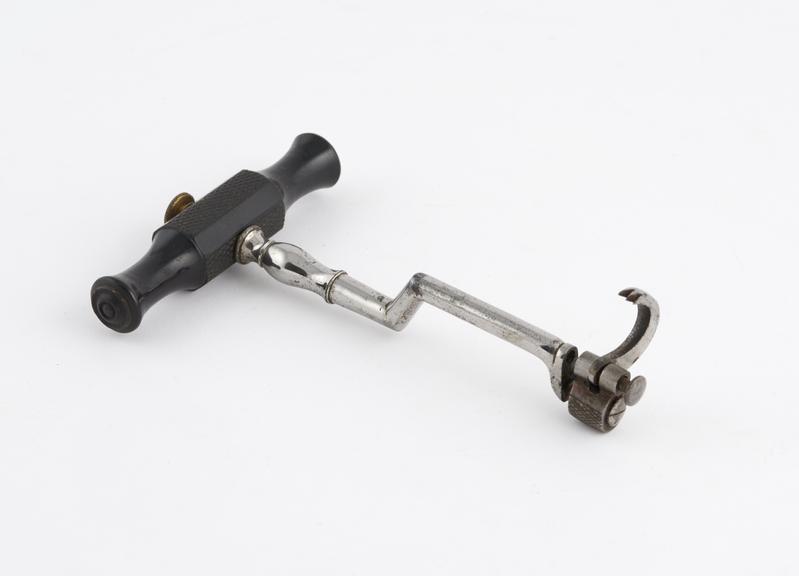
Dental key for extracting teeth, steel with ebonite handle and double bended shaft, English, 1860-1900
Dental keys, were tools for extracting teeth that were commonly used during the 18th and 19th centuries. While gripping the handle, the person removing the tooth would insert it into the mouth of the patient. Once the claw-like end of the key was over the tooth to be extracted and the ‘bolster’, at the end of the long metal shaft and to which the claw is attached, placed against the tooth’s root, the handle would be rotated – like a key in a lock. The tooth would be gripped by the turning claw and ideally removed, or at least loosened in the first instance.
It was a crude mechanism and in inexperienced hands teeth could be broken, gum tissue damaged and even jaws occasionally fractured. And rather than trained dentists, those removing the teeth would often be itinerant ‘tooth-pullers’ who travelled from town to town plying their largely unskilled trade, with at best the most limited forms of pain-killing. Dentistry did not become a regulated and licensed profession until the late 1800s. However, the dental key was an improvement on an earlier instrument – known as a ‘pelican’ – which it largely replaced during the 18th century.
Over time, the design of dental keys was also subject to change. For example, the straight shaft seen in early keys could result in unwanted pressure on teeth neighbouring the one being removed. To reduce that effect, keys which had a slight kink or curve in the shaft began to be introduced during the 1760s. While some more sophisticated later designs incorporated adjustable or even interchangeable claws to provide a safer and more effective grip. However, like the pelican before it, by the end of the 19th century dental keys were themselves becoming obsolete with the introduction of specialised tooth-removing forceps.
Details
- Category:
- Dentistry
- Collection:
- Sir Henry Wellcome's Museum Collection
- Object Number:
- A38415
- Materials:
- handle, ebonite and shaft, steel
- type:
- dental keys
- credit:
- Wellcome Trust (Purchased from Stevens)
